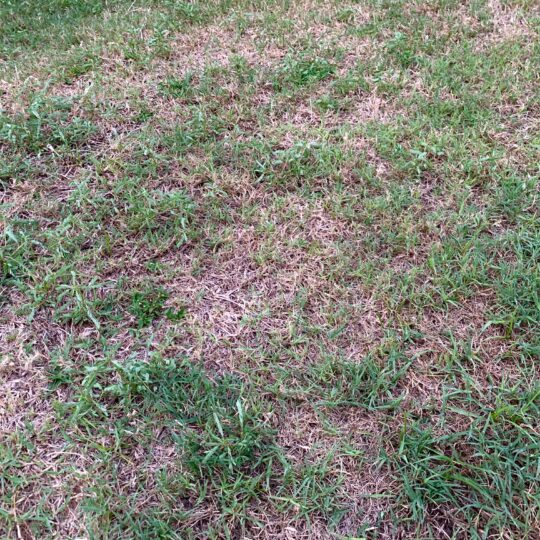Disease Spotlight: Brown Patch
How it Differs from Dead and Dormant Grass
Posted
November 28, 2024

If you notice your lawn is looking a little patchy and brown, it could be signs of dormancy, disease, or dead grass. Between summer stress, preparing for winter, and other biological factors, your grass could be going through a natural loss of vibrancy or brown patch disease. Learn how to tell the difference and what to do in each situation.
Signs of Brown Patch Disease
There’s a way to tell the difference between brown patch disease and dead or dormant grass. Once you assess the appearance and discover the cause you can better manage the treatment.
The following signs are an indication of disease:
- Circular or irregular patches of brown or tan grass
- A dark, purplish ring around the patch edges
- Grass feels slimy or matted
- Damp lesions or spots on grass blades
Brown patch is a fungal disease that thrives in warm, humid conditions. It’s more likely to appear in cool-season grass that’s overfertilized, overwatered, or in an area with poor drainage. Since the roots are still alive, the grass won’t pull out easily. It’s possible to treat the fungus and improve the conditions so the lawn can recover.
Signs of Dormant Grass
Grass also go through natural dormant phases under extreme temperatures. This is why you’ll often see it turn brown in the middle of the summer and winter. Signs of dormant grass may be similar to dead or diseased grass, but it’s often more consistent across the lawn instead of in patches.
- Dormant grass turns tan, yellow, or light brown
- Green growth is still present at the base near the soil
- Blades feel dry and brittle on top but may still have some flexibility at the crown
To determine if your grass may be dormant, lightly tug on the turf. Dormant grass resists being pulled out because its roots are still anchored. You’ll also see signs of recovery within periods of mild temperatures and deep watering. If your grass remains brown and brittle, it may be time to reseed in the spring or fall.
Signs of Dead Grass
If your grass is consistently discolored throughout the year, doesn’t bounce back after watering, and easily pulls up, it may be a goner. Grass can die during any season because of the following factors:
- Drought or insufficient water
- Excessive heat or frost damage
- Physical damage, such as pet urine or heavy foot traffic
- Nutrient deficiency or poor soil
While there’s no way to bring grass back to life, there is a way to revive your lawn. Reseeding the area or laying new sod are your only options.
Reviving Your Lawn
If you’ve determined your grass is dormant, the only thing to do is wait until it bounces back. But if your grass is diseased or dead, there’s more work to do. There’s also an ideal time to treat your lawn for disease or overseed. Treatment products and new seeds have a better chance of catching on during active growing seasons. Once the ground freezes and temperatures turn extreme, your efforts won’t be as effective.
Contact Cardinal Lawns to help determine what issues your lawn may be dealing with and what solutions are best. Our lawn care and seeding programs can help regain your lawn’s health and vitality.

Download Your FREE Lawn Disease Guide
Even the most manicured landscapes are susceptible to lawn disease. Take some time to learn about identification and removal before one takes over your lawn. This handy guide teaches you how to spot common lawn diseases as well as how to properly treat them.